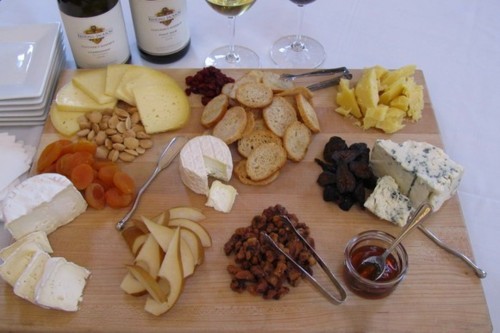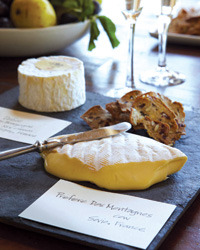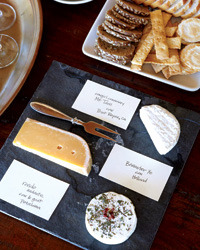Many people wonder how to put together a cheese tray and it is a lot easier than you may think. I will start you with the biggest mistake people make, which is thinking there is an exact science but it really all comes down to preference.
Growing up in what many friends called “the cheese family,” I have been to my fair share of wine and cheese parties and various “get-togethers” where cheese has been a staple. My grandfather even started a tradition in our ski town where the whole mountain would ski by our house and enjoy a wine and cheese bonfire at the end of the ski season as a way of bringing the community together.

There are not many ways you can go wrong in adding a cheese tray to your party but there are some key elements to keep in mind. First, pick out your serving piece. This could be anything from various size plates to a platter (my favorite is a rustic looking wood cutting board that was my grandmothers) and decide how many types of cheese you may want to serve. Next, when shopping for cheese, don’t feel you have to stay strictly to one country. Buy a variety of soft, medium and hard cheeses in different sizes, from around the globe to ensure your guests have lots to taste. When placing the wedges on your serving piece, don’t serve strong and mild cheeses next to one another, this will keep the flavors with the right cheese. Another element to keep in mind would be what to serve with your cheese board beside the traditional bread or crackers. Items such as honey, olives, mustard, pickled veggies or fruit will do the trick! Serve this food on another serving piece or on a separate side of the plate. You could also use mini decorative bowls to keep the cheeses from acquiring other flavors.


The next big task is picking out the right knives for your selected cheese. If you have cheese knives, now is the time to dig them out of the back of the drawer and use them but if you don’t own cheese knives, butter and pairing knives will work as well. For hard cheeses such as Pecorino Romano, Parmesan or an Aged Cheddar, look for a knife that is short, flat and has a pointy blade with smooth edges. The way you use this type of knife is to chip away at the cheese or scrape across the top. For a softer cheese like Gorgonzola, Blue Cheese or Camembert, look for a blade that is thin, long and has a dull edge. The third knife to know and love is for high fat/sticky cheeses. You want to look for a knife with holes in it to keep the cheeses like Brie or Taleggio from sticking to the blade (this will ensure you get the best slice). Once you have your individual knives paired with the cheese go ahead and slice a few preliminary slices so your guests can follow your lead.
My final tip would be to “ID the cheese.” I found a fun way of “ID-ing the cheese” when I planned my dad’s 50th birthday party by using nametags on toothpicks to list the name and flavor of the cheese so the guests would have an idea before tasting. For example, “Hello my name is Asiago Pressato and I am made from Cow’s milk in Italy. I am a hard cheese with rich flavor sometimes a sharp yet nutty consistency.” Have fun with it!
OR just have your dad come home from work with this...
NEVER a dull party with this around...
XO




No comments:
Post a Comment